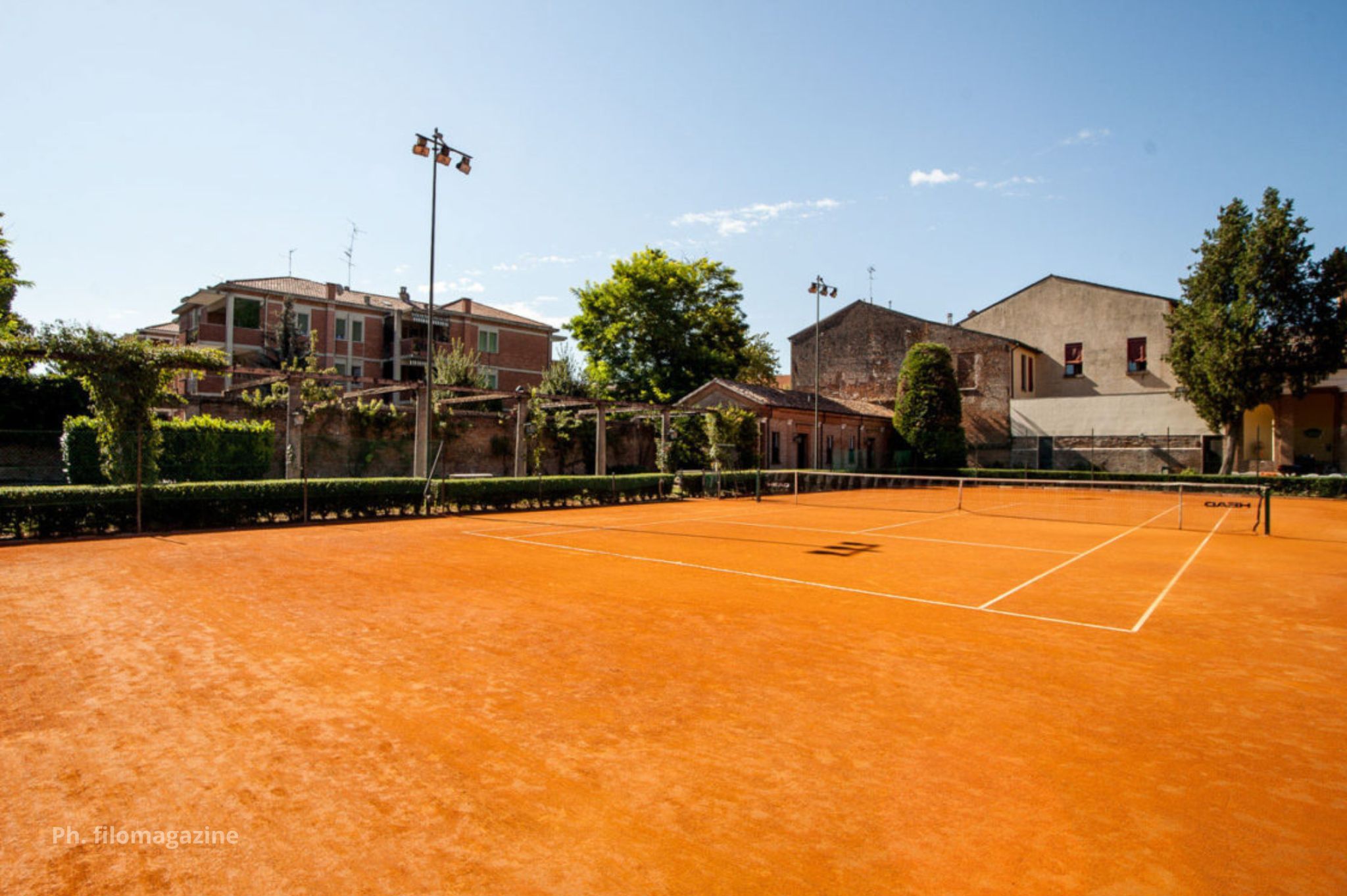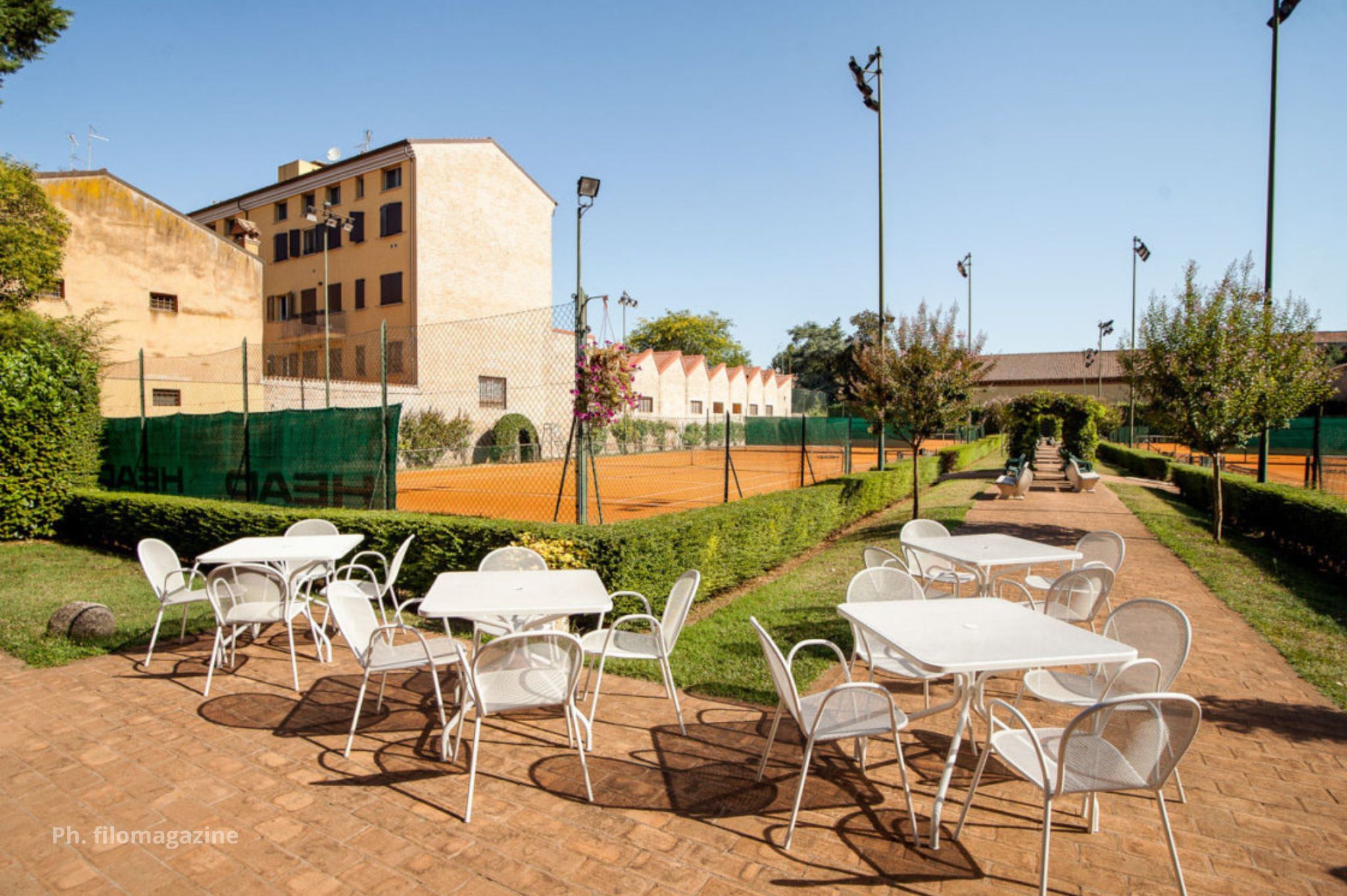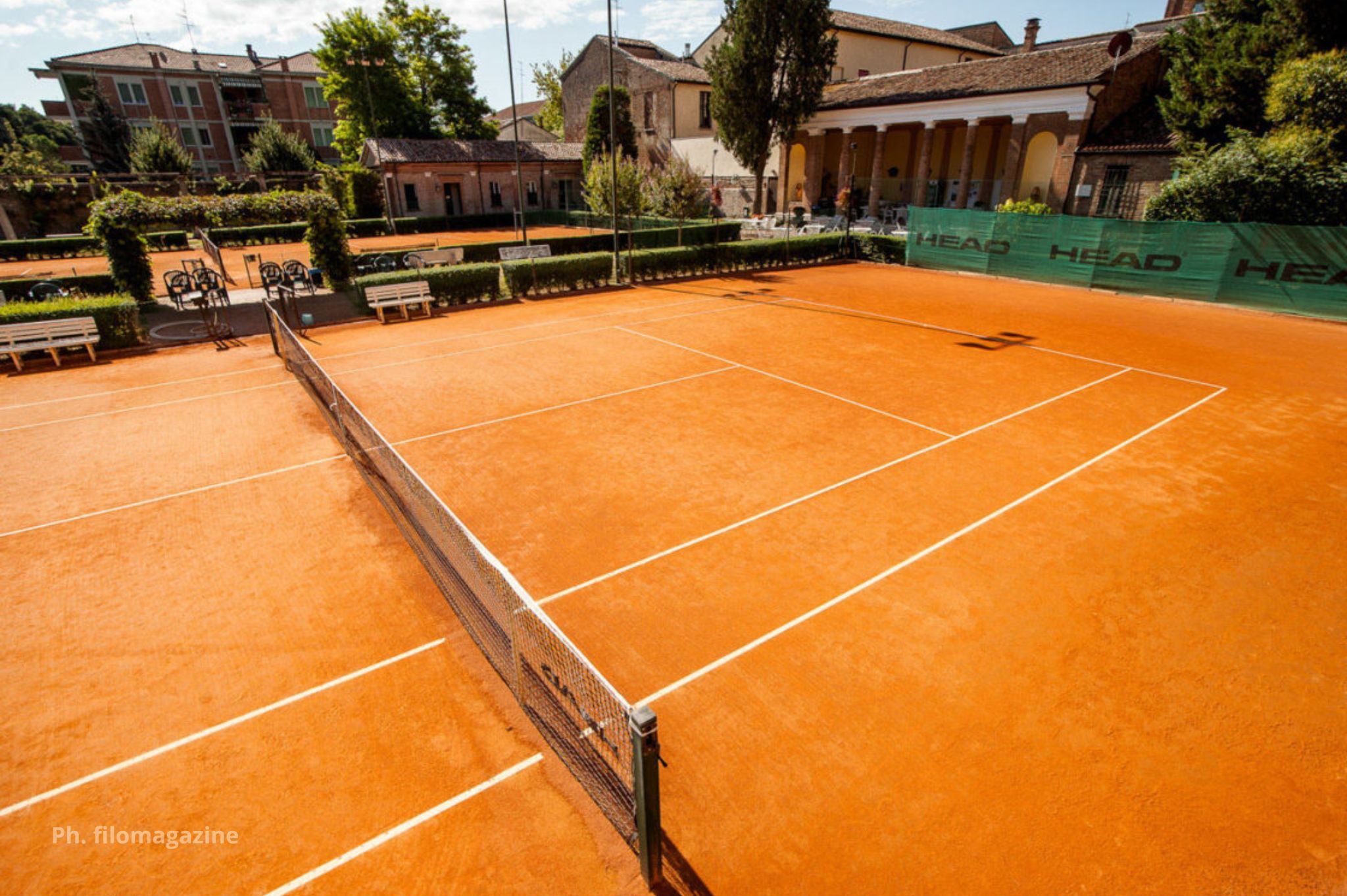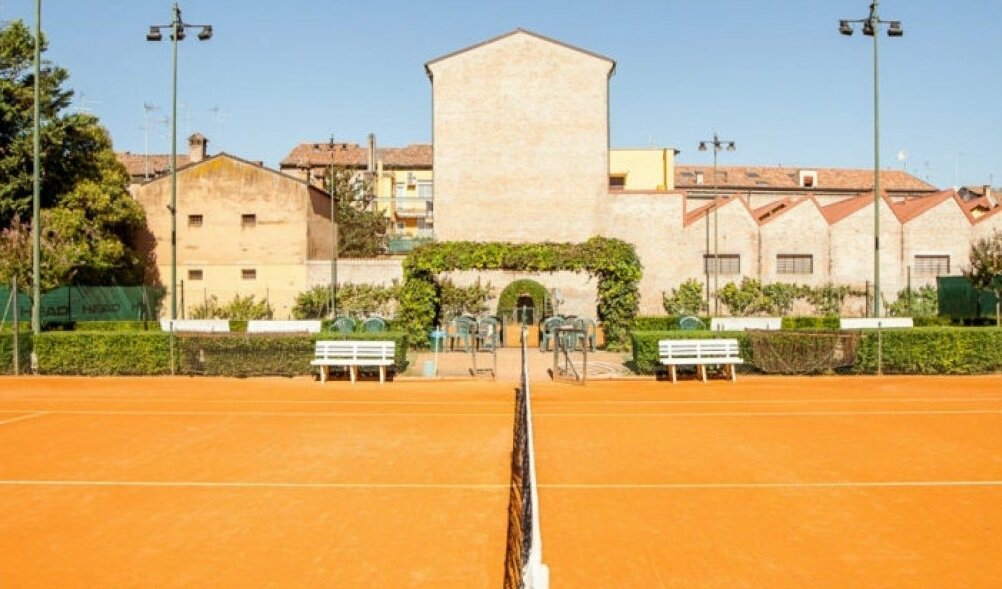Potrebbe interessarti anche

Marfisa Tennis Club: a temple of tennis between history and literature
Just inside the city walls, between Via Saffi, the magnificent Palazzina Marfisa d'Este and Palazzo Bonacossi, a piece of Ferrara's history remains in business, the Marfisa Tennis Club. The Marfisa (as Ferrara people have always called it in confidence) is that place where it seems that time has never passed, so elegant and composed. In the air run the knock-knocks produced by the balls on the red clay and nothing else, just the concentrated silence of the players even though the Club is located a stone's throw from the busiest streets of the historic center.

The Marfisa has been standing here motionless since 1929, since Carlo Savonuzzi - a Ferrara engineer to whom the city also owes the Aqueduct, the Paolo Mazza Stadium, the Conservatory, and many other urban planning solutions - designed it so that it would establish itself as the Ferrara tennis club par excellence. Little and nothing has changed since then, thanks in part to the management's interest in preserving the authentic historic club. Attention to detail and constant care have enabled the Marfisa to bring its age to its best and to overcome unscathed the invasive intervention of the Germans who, during World War II, turned two of the courts into horse stables!
From 1955 to the present, the tennis club has hosted and organized competitions of national importance, such as the Brian Cup, which featured Nicola Pietrangeli and Fausto Gardini, or the Bossi Cup in 1959, the famous Facchinetti Cup in 1973, the Luzzato Cup in 1974, the Lambertenghi Cup, or the Ferrara City Cup. The club's commitment and professionalism also secured it two very important awards from the C.O.N.I.: the Silver Star in 1974 and the Gold Star in 1995. Photos, plaques and cups, testifying to these lines, are scattered and hung among the halls of the Marfisa, along with newspaper clippings and other indelible memories.
Today the club, under the presidency of engineer Daniele Malucelli since 2014, continues to host competitions and tournaments counting about 450 members of all ages. From being an elite club that welcomed only members of middle-class and affluent families, today the Marfisa is being popularized by a broader segment of the citizenry that carries on its competitive legacy.

Malucelli, who began frequenting the tennis club when he was only 11 years old along with his father, an assiduous player, has many anecdotes to tell that profile a Marfisa that grows and changes along with its patrons, always maintaining that gentle aura of yesteryear. From social dinners at the Hotel Astra on Cavour Avenue, to fancier tournaments ... like the time some members decided to play "fin tennis," wearing fins instead of traditional shoes!
There was no shortage of illustrious players: on these courts one could meet Giorgio Bassani, who never stopped frequenting the Club, even after he moved to Rome, Luciano Chailly and Michelangelo Antonioni. Bassani also set his Garden of the Finzi-Contini among these very fields, and the Club wanted to pay tribute to him a few years ago by setting up the so-called "Bassani path": a path marked by several golden plaques, along the perimeter of the structure, which show the most beautiful passages from Bassani's well-known work.
Antonioni also wanted to pay homage to the Club with his art: the Marfisa appears in Cronaca di un amore to serve as the backdrop for a private investigator's inquiry into the dark past of the protagonist, Paola Molon.

A Club closely linked to its city, then, which like so many, fostered friendships and social relationships destined to last a lifetime, and for this reason it is still so beloved by its members. It still welcomes its historical members among the inner rooms, reminiscent of those of village bars, amidst TVs on, chatter, confidences, and laughter, but with that innate Marfisa elegance. Not only sporting merit, then, but a strong feeling of belonging, the usual unbreakable relationships, glorious memories, and a bit of confidential chatter. Perhaps therefore Antonioni sent the private investigator of his film right here to the Club to investigate...?

